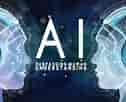The Evolution of Artificial Intelligence:The Journey Through Time
- Diana Joy Zipagan
- Jul 17, 2024
- 2 min read
Updated: Jul 18, 2024
Artificial Intelligence (AI) has come a long way since its inception. Let’s delve into its fascinating history, explore its impact on various aspects of our lives, and compare the world before and after AI.
1. The Birth of AI: 1950s
In the 1950s, computing machines were essentially large-scale calculators. Human “computers” or teams of women manually solved complex equations for tasks like rocket trajectory calculations1.
British mathematician Alan Turing envisioned a machine that could surpass its original programming. He conceptualized AI, even before it was officially named as such. Turing also introduced the famous “Turing test” to assess whether a machine could think like a human1.
2. Founding Fathers of AI
John McCarthy, along with other researchers, convened the Dartmouth Conference in 1956. They explored the possibility of “thinking machines” and coined the term “artificial intelligence” during this event.
McCarthy’s vision laid the foundation for AI research and development.
3. AI’s Impact on Business and Education
Business:
Automation: AI streamlines processes, automates repetitive tasks, and enhances efficiency. From chatbots in customer service to supply chain optimization, AI revolutionizes business operations.
Data Analysis: AI analyzes vast datasets, providing valuable insights for decision-making. Businesses use AI for predictive analytics, fraud detection, and market trends.
Personalization: AI tailors marketing campaigns, recommends products, and customizes user experiences based on individual preferences.
Education:
Personalized Learning: AI adapts educational content to students’ needs, pacing, and learning styles. It provides personalized recommendations and feedback.
Virtual Tutors: AI-powered chatbots and virtual tutors assist students with queries, homework, and exam preparation.
Automated Grading: AI can grade assignments, saving educators time and ensuring consistency.
4. Life Before AI vs. After AI
Before AI:
Manual Labor: Tasks like data entry, calculations, and repetitive work relied on human effort.
Limited Data Insights: Analyzing large datasets was time-consuming and error-prone.
Human-Only Decision-Making: Decisions lacked data-driven precision.
Communication Challenges: Interacting across languages and cultures was more cumbersome.
After AI:
Automation: Mundane tasks are automated, freeing up human potential.
Data-Driven Insights: AI processes data swiftly, revealing patterns and trends.
Enhanced Decision-Making: AI assists in informed choices across industries.
Global Communication: AI-powered translation tools bridge language gaps.
Conclusion
AI’s journey from theoretical concepts to practical applications has transformed our world. As we embrace AI, let’s continue to explore its potential while ensuring ethical and responsible use.



Comments